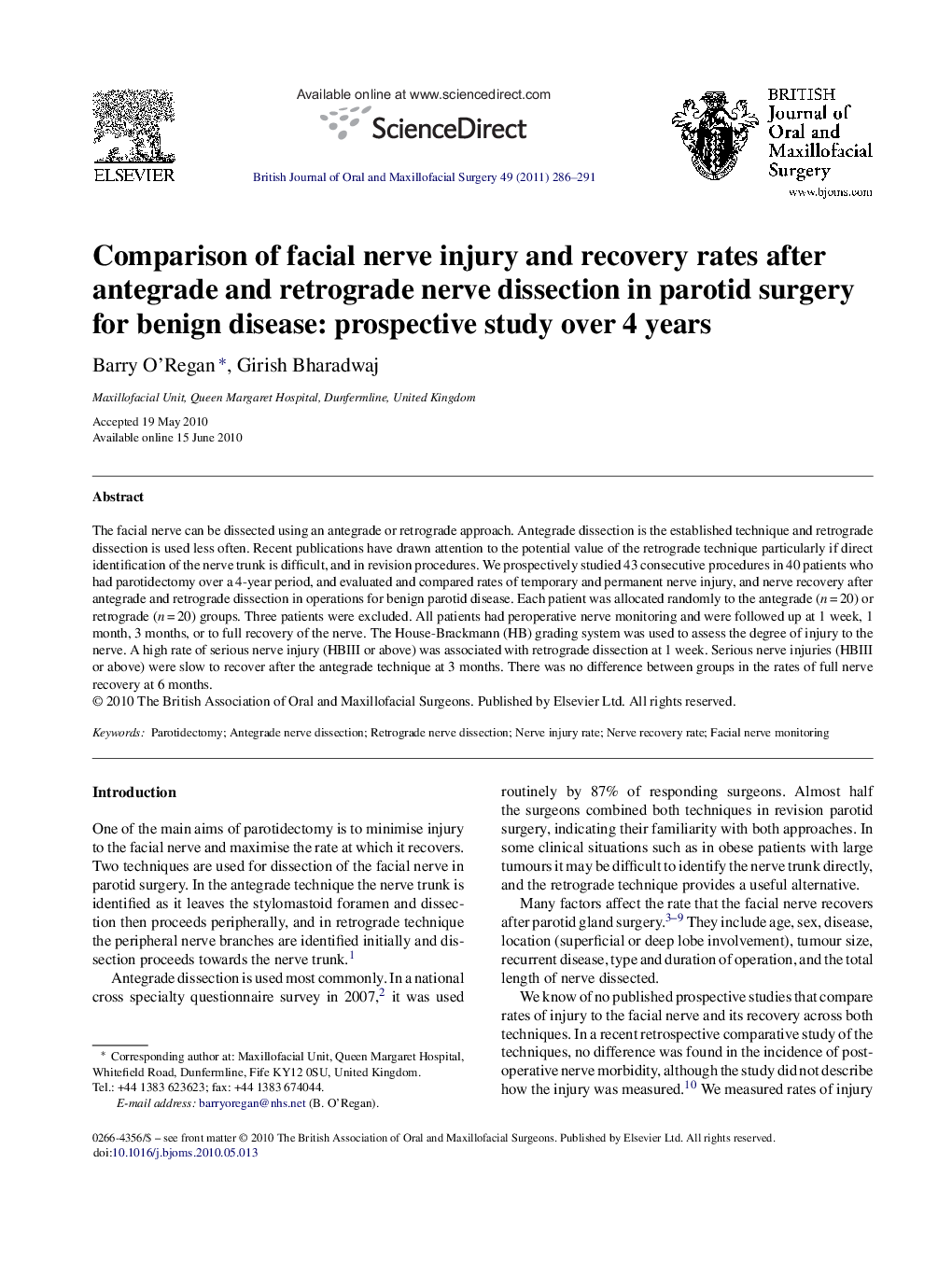| Article ID | Journal | Published Year | Pages | File Type |
|---|---|---|---|---|
| 3124263 | British Journal of Oral and Maxillofacial Surgery | 2011 | 6 Pages |
The facial nerve can be dissected using an antegrade or retrograde approach. Antegrade dissection is the established technique and retrograde dissection is used less often. Recent publications have drawn attention to the potential value of the retrograde technique particularly if direct identification of the nerve trunk is difficult, and in revision procedures. We prospectively studied 43 consecutive procedures in 40 patients who had parotidectomy over a 4-year period, and evaluated and compared rates of temporary and permanent nerve injury, and nerve recovery after antegrade and retrograde dissection in operations for benign parotid disease. Each patient was allocated randomly to the antegrade (n = 20) or retrograde (n = 20) groups. Three patients were excluded. All patients had peroperative nerve monitoring and were followed up at 1 week, 1 month, 3 months, or to full recovery of the nerve. The House-Brackmann (HB) grading system was used to assess the degree of injury to the nerve. A high rate of serious nerve injury (HBIII or above) was associated with retrograde dissection at 1 week. Serious nerve injuries (HBIII or above) were slow to recover after the antegrade technique at 3 months. There was no difference between groups in the rates of full nerve recovery at 6 months.
